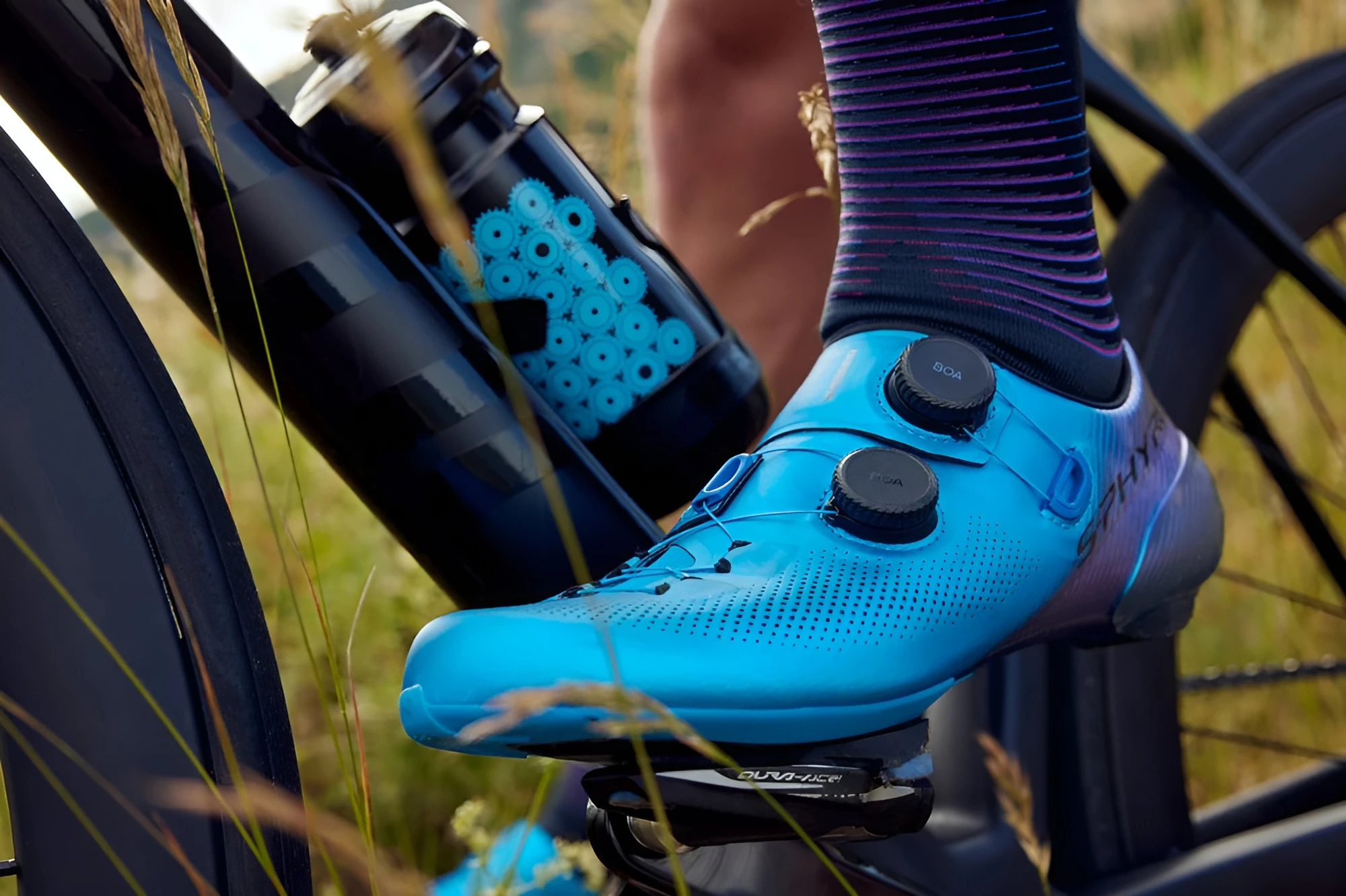Shimano has been granted a US patent on a wireless electronic cleat system for cycling shoes. The system is used to adjust the position of the shoe relative to your pedals as you ride. It allows fore+aft and lateral positioning via inputs from rider and bike sensors. These generate data which determines and automatically moves to an optimum shoe position. Manual adjustment is also possible.
Do we need such a thing? Is it intended for road, off road or gravel use? How would it stand up to rough and tumble? The system is not actually on the market – and indeed, as with many patents, a product may never see the light of day – so it's hard to say, but let's have a look anyway.
Usually a rider is joined to the bike via a shoe, cleat and pedal. Here the shoe incorporates an "adjuster" on the sole. The cleat is fitted to this and the shoe clips to the pedal in the traditional way. This adjuster incorporates a reversible electric motor, which moves the shoe front to rear and left to right along rails.
The pedal houses the main battery powering the system, and a wireless system powers the shoe, cleat and adjuster.

But why such adjustability? Well, as cyclists move over different types of terrain and different uphill and downhill slopes, they adjust their body position to suit. This can change the pivot points and angles of the legs, and thus perhaps there are potential mechanical advantages and performance gains if the foot's contact point can adjust to compensate.
It's the sort of thing you might do without thinking on a set of flat, clipless pedals, but obviously with most clip-in shoes, that's not possible without pulling over and getting out the Allen keys.
Shimano's proposed automatic system senses the riders' need for optimal foot position via those aforementioned body and bike sensors. According to the patent, the shoe might adjust for optimal performance based on a number of factors; changes in pedal input power, changes in cadence, moving from gravel to paved roads, or even in response to GPS data ... The cleats might move forward in the shoe when the bike detects you're riding uphill, or sprinting hard, for example.

As Velo points out, though, the potential performance gains here aren't currently backed up by science. One relevant 2023 study, for example, found that "adjusting the anterior-posterior foot position on the pedal does not affect cycling economy in competitive cyclists pedaling at a steady-state power output eliciting approximately 90% of VT [Ventilatory Threshold]."
This was likely lab testing, though, rather than real-world riding in changing conditions. Top-level cycling being as competitive as it is, every half-percent of performance is worth pursuing, and it'll be interesting to see whether this tech starts appearing in races, or potentially even in a consumer product, where it'd doubtless find buyers.
We contacted Shimano for comment – the response was predictable: "Shimano is constantly in development of new products, but does not comment on rumors, innuendo, or speculation about products whether they are in development or not."
What are your thoughts? Does this kind of tech look useful and interesting to you, or closer in function to a five-year-old's flashing LED sneakers?
Source: US Patent Office (US 12059058 B2)





